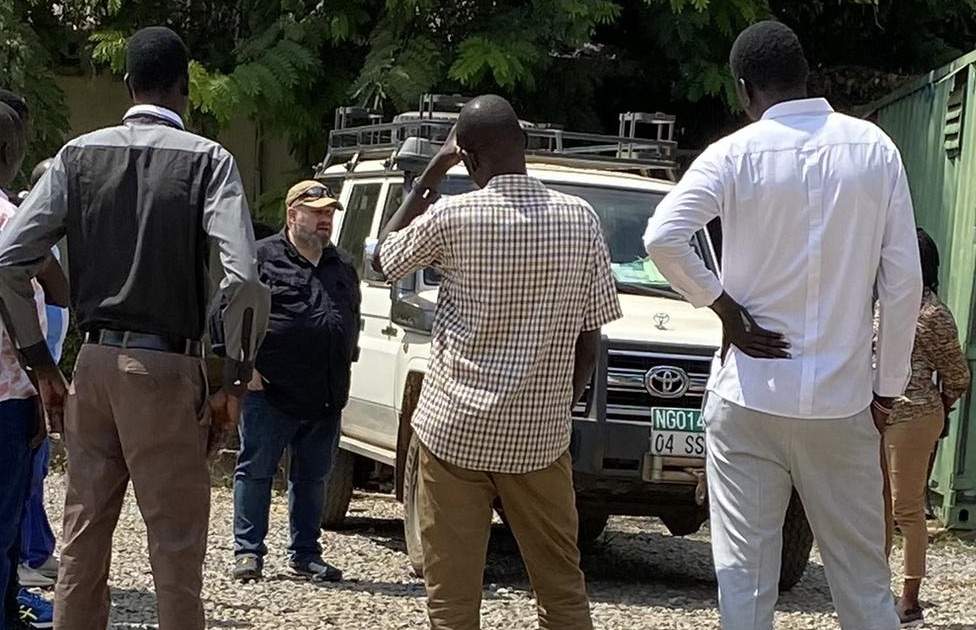What is Hostile Environment Training?
You may have heard of Hostile Environment Training and not be sure what it is. You may have also heard it called some different names, HEFAT, HEAT, SAFE. The aim of this post is to explain what it is, why there are different names and who it is for.
What is Hostile Environment Training?
You meet someone new, or maybe someone you haven’t met for a while. They tell you what they do for a living, and they tell you they have been to country X. Some people will hear the country and think of somewhere exciting and exotic. Others will straight away think of danger and risk.
The truth is that many people work abroad in countries that are exciting, exotic, and dangerous! They could be aid workers in an INGO, government staff, journalists, or people from a number of other industries such as gas and oil or security.
Often these countries are called hostile environments, personally we don’t like the term and prefer to use “complex environments”, but hostile is generally used throughout the industry. The UK government splits complex environments into ‘fragile’ and ‘hostile’. The former is countries with a lack of stability, often political instability, although it could be high crime, environmental or several other factors. The latter is often considered hostile because there is an active threat against the traveller, this could be from the country’s government, because of war, civil unrest, or because of terrorism.
Examples of a fragile environment would be South Sudan, Mali, Pakistan, Lebanon, Somalia, Kenya, and Nigeria. Examples of hostile environments would include Afghanistan, Iraq, and Ukraine.
Of course, there are grey areas in all of this. Countries can move between fragile and hostile frequently, countries might pose a significant threat in one area – cybersecurity for example in India or Iran. We also shouldn’t neglect the impact of natural disasters (or unnatural disaster as some might say) when considering if an environment is fragile.
Why the different names?
Hostile Environment training is an umbrella name that covers three main courses:
HEFAT - Hostile Environment and First Aid Training
HEAT - Hostile Environment Awareness Training
SAFE – Security Awareness for Fragile Environments
SAFE+ - Security Awareness for Fragile Environments plus hostile training (normally one day extra to the SAFE course)
We often get asked what the difference is between the courses and the truth is very little. In fact, you generally get more variation between providers than between course names. The courses are generally aimed at different groups, HEFAT is normally journalists, HEAT is normally INGOs and SAFE is normally government but there is no fixed rule.
The other common question we hear is which is harder. Again, the truth is they’re very similar, but they’re designed for different people. Someone from the government will have a large support network in country, probably live in an embassy compound, and have access to close protection if needed. Their course is often about how to avoid danger and stay away from it. Journalists on the other hand move towards dangers because that’s where the story is and they often work in small, autonomous teams. Therefore, their training is more about dynamic risk assessment, and what to do in various situations.
Why do people need a Hostile Environment course?
All employers in the UK are compelled by the Health and Safety at Work act, 1974. This act states “It shall be the duty of every employer to ensure, so far as is reasonably practicable, the health, safety and welfare at work of all his employees”.
When organisations are sending staff or volunteers abroad, they have a responsibility to ensure they have done everything reasonably practicable to provide a safe working environment. Clearly, they cannot eliminate all risk but measures they can take include PPE, out of bounds area, in country rules, curfews, close protection teams, and of course pre-training, such as a Hostile Environment Awareness course.
What topics are covered on a Hostile Environment Training course?
Common topics covered across all courses include:
- Personal Safety
- Group Safety
- Travel Risk Management
- Hotel security
- Dealing with checkpoints
- First Aid
- Kidnap and Ransom awareness
- Individual considerations – gender, sexuality, race etc
- Responding to a terrorist incident
- Arrest procedures
- Cyber security/OSINT
- Mental Health awareness/PTSD awareness
Courses geared towards hostile Environments are more likely to include:
- Mine and IED awareness
- Reaction to indirect fire
- Kidnap and ransom training
- Working with a close protection team
You can see an example of a HEFAT course in the video below from the International Women's Media Foundation.
Like we say above, we prefer to think of environments as complex rather than hostile. Because of the complexity it is hard to make a ‘one course fits all’ approach and therefore courses are often either tailored to the environment or the industry of the client.
At Kaizen Consulting and Training we do not deliver many of our own Hostile Environment courses, but we can and do. We have experience in delivering HEFAT to a variety of media outlets, SAFE and SAFE+ to the UK government and HEAT to several NGOs. We just don't want to run a regular, open course and spend time chasing people to fill the course, we'd much rather run something bespoke and develop it with an organisation.
If you would like more information on how we could help you with Hostile Environment Training, or you have questions and just want to discuss this type of training then please contact us. If you have a provider and would like an independent review of the course or an external quality assurance please also get in touch. If you're not sure if your staff need training or are interested in our 1-day Safety Awareness for Lone Travellers (SALT) course then have a look at out Travel Risk Training or Travel Risk Consultancy pages.

